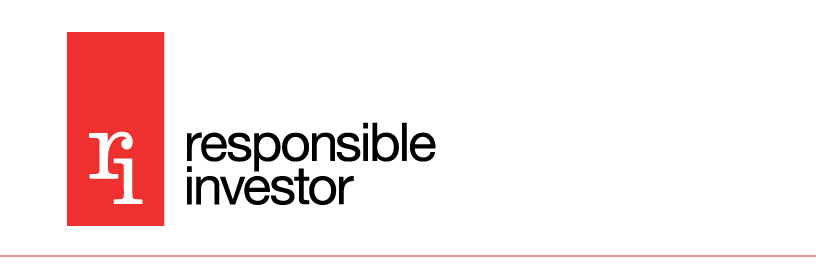
It is a safe bet that there will be many calls for greater collaboration between public and private capital to finance climate adaptation and nature loss mitigation at COP28.
As JPMorgan CEO Jamie Dimon said recently: “What we need in development finance dwarfs what governments can do, so it cannot be done without private capital.”
This is not a new debate. Fixed income, in particular public debt investment, remains an under-utilised pool of money.
Private capital does finance the activities of development finance institutions and multilateral development banks through purchases of very high-grade bonds, often AAA or AA-rated, but this provides little additional risk-taking capacity for the DFIs and MDBs.
These bonds are also less interesting for investors seeking more elevated risk/return profiles, as well as more impact per dollar invested.
Contingent resilience-linked bonds
As a potential remedy, the Anthropocene Fixed Income Institute has proposed a novel bond structure, the contingent resilience-linked (CORL) bond. It builds on earlier impact structures while solving some pressing issues for investors.
The CORL bond can deliver a significantly lower cost of capital for issuers that achieve resilience and sustainability targets. It creates a simple structure for investors in line with existing market instruments and without undermining their fiduciary duties.
It also provides, vitally, an effective solution for leveraging public capital, with clear, market-defined valuation exposures.
CORL is similar to a sustainability-linked bond (SLB) with a “step-down” structure, in which the issuer benefits from a reduced interest (coupon) payment on its debt, if it achieves its sustainability performance targets (SPT).
In CORL, however, the initial coupon of the bond is fixed to the going market rate of the issuer for an equivalent vanilla bond.
Normally, an SLB with a step-down would need to price with a fixed coupon above that of the equivalent vanilla bond. This does not work well for issuers. It creates a considerable explanatory burden for a CFO or treasurer, who needs to justify why an issuance is more expensive in the short term.
To address this, the CORL bond uses an additional feature – a “credit enhancement” provided by a DFI – to enable it to fix with a coupon flat to the equivalent vanilla bond.
In CORL, if the issuer achieves a step-down because it has met its sustainability or resilience-linked target, a DFI steps in and provides a credit enhancement in the form of an enhanced recovery rate (which pays out in case of a default by the issuer).
If the issuer does not achieve its SPT, the CORL bond continues to pay the market rate coupon, making the investor no worse off than if they had bought a straight bond.
In an example based on real market data, we show an issuer, rated BB flat, issuing a 10-year CORL bond, with a potential step-down of 1.25 percent after five years. This bond would fix with a 7.25 percent coupon – the same as a vanilla bond – and then effectively step down to a 6 percent coupon payout if its targets are achieved.
To get this pricing, we assume that a DFI provides a credit enhancement of 20 percent extra recovery if there is SPT achievement and default, and that such an enhancement combined with the resilience measures being applied would raise the implicit credit rating by one notch, from BB to BB+, after the step-down event.
Cheaper capital
The logic behind this is simple. Say that we have an issuer that is at significant economic risk from flooding. If the issuer gets access to capital today to invest in resilience measures, we would expect the likelihood of a future default to be smaller. Investors are providing cheaper capital to incentivise such measures, but without being concessionary.
The DFI providing the contingent credit enhancement will benefit by mitigating future capital costs; with more resilience measures in place, there will be less need for emergency funding to cover future flooding disasters.
For the investor, the structure has further advantages.
SLBs are already circulating and relatively straightforward to implement from an operational standpoint. The credit enhancement structure is easy to price and should be implemented in a straightforward way as a cash payout in case of default, avoiding webs of guarantees and complicated legalese.
The increased financial materiality of the structure would make it easier to allocate CORL bonds into “impact” investment portfolios, eg, Article 8 and 9 funds, especially since targets will be agreed with governmental organisations.
For the issuer, the CORL structure should be attractive, as it allows for a materially lower cost of capital upon SPT achievement.
In our example, the expected average interest rate would be around 6.65 percent for the issuer over the life of the bond, compared to 7.25 percent in a vanilla bond, meaning a 0.60 percent reduction in their cost of capital.
Compare this to a use-of-proceed bonds issuance, where a 0.15 percent concession (“greenium”) would be considered sizeable.
In contrast to use-of-proceeds bonds, the structure can support consistency over electoral cycles, which is important in countries where policies on resilience and sustainability are volatile, as in the examples of Sweden and the UK recently.
Partial credit enhancement
How does this use public money more efficiently? The CORL structure only assumes a partial credit enhancement, and it is straightforward to price this enhancement on an expected value basis.
In our example, we calculate the balance sheet “cost” to the DFI booked on day one of the CORL bond to be around 3 percent of the nominal. This means that $1 billion of DFI capital would be able to enhance and crowd in private capital to the tune of $25 billion-$30 billion through CORL bonds.
The initial investor feedback on the CORL concept has been supportive. Hopefully COP28 will act as a catalyst to move from discussion to plans for implementation.
Ulf Erlandsson is CEO and founder of the Anthropocene Fixed Income Institute and a board member of the UN Office for Disaster Risk Reduction Investment Advisory Board










